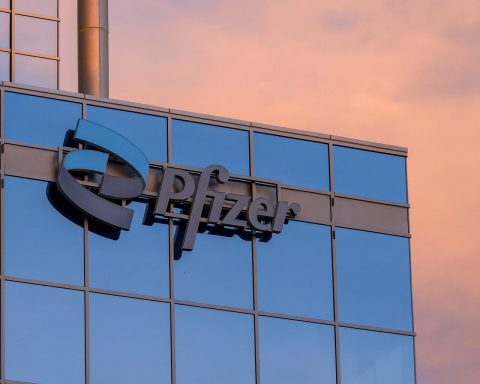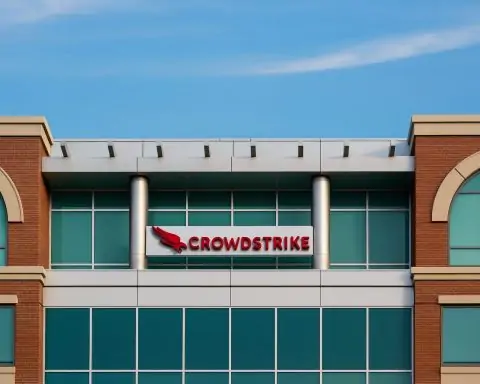Taiwan Semiconductor Manufacturing Company (NYSE: TSM, 2330.TW) heads into the weekend sitting near record territory and still at the center of almost every big story in chips — from Nvidia’s AI boom and new fabs in Japan and Arizona to an alleged 2‑nanometer “leak” involving a former executive who just joined Intel.
As of the latest data following Friday’s U.S. close, TSM finished around $275 per share, down roughly 0.9% on the day, giving the company a market capitalization of about $1.43 trillion and placing it among the 10 largest listed companies in the world. [1] Despite that modest pullback, TSM is still up about 42% year to date, massively outperforming the broader market. [2]
Below is a rundown of the key TSMC stock news specifically tied to November 22, 2025, and how it fits into the bigger investment story.
TSMC stock snapshot: price, valuation and size
- Latest price (post‑Friday close): about $275.01, down roughly 0.9% on the session. [3]
- 52‑week range: approximately $134.25 – $311.37, highlighting how far the stock has run in the past year. [4]
- Market cap: around $1.43 trillion, making TSMC the 8th‑largest company globally and one of only a handful of trillion‑dollar chip names. [5]
- Valuation: TSM trades on a price‑to‑earnings ratio around 28x and a PEG ratio close to 1.0, according to recent institutional research summaries. [6]
- Balance sheet: debt‑to‑equity near 0.20, with strong liquidity (current ratio ~2.4, quick ratio ~2.1). [7]
In other words, TSMC is priced like a high‑quality growth blue chip: not cheap, but not in speculative territory given its dominance in advanced process technology and AI chips.
Headline 1 – Noyce Award: TSMC leadership gets the industry’s top honor
On November 22, TSMC’s Chair and CEO C.C. Wei and former chair Mark Liu were jointly awarded the Robert N. Noyce Award, the Semiconductor Industry Association’s highest annual honor. [8]
Key points from that coverage:
- The award recognizes leaders who have “significantly shaped the global semiconductor industry.” [9]
- It comes after founder Morris Chang received the same award back in 2008, underscoring TSMC’s multi‑decade influence on chip manufacturing. [10]
- Articles note that the honor highlights TSMC’s progress across 7nm, 5nm, and 3nm nodes and its push into 2nm and advanced chip‑on‑wafer‑on‑substrate packaging, which are critical for AI and high‑performance computing. [11]
For investors, this matters less as a feel‑good headline and more as confirmation of TSMC’s central role in the AI era. The award ceremony, held in California, also served as a platform for Wei to reiterate TSMC’s commitment to expansion in the United States, including its large Arizona build‑out. [12]
Headline 2 – Intel “2nm leak” controversy and Taiwan’s investigation
The most sensitive TSMC‑related story this week — and one still dominating November 22 coverage — is an ongoing probe into whether a former TSMC executive took trade secrets to Intel.
The timeline looks like this:
- Reuters reported November 20 that Taiwanese prosecutors opened an investigation into a former TSMC executive on chip security concerns, after allegations that sensitive process information may have been taken when he moved to a foreign company. [13]
- Local media identified the executive as Dr. Wei‑Jen (Lo) Wen‑jen, a veteran TSMC R&D leader who retired and later joined Intel Foundry. [14]
- On November 22, Intel CEO Lip‑Bu Tan publicly pushed back on rumors that Lo is bringing over TSMC’s 2nm secrets, calling the stories “rumor and speculation” and stressing that Intel “respects IP.” This line appeared in both regional business press and more detailed technical coverage. [15]
A deeper industry‑focused piece from Wccftech adds nuance:
- Taiwan’s Minister of Economic Affairs confirmed there is a formal investigation under way, but also noted that TSMC internally handles most such cases and that the scope of a direct government intervention may be limited. [16]
- Lo’s new role at Intel is said to revolve primarily around advanced packaging, not direct duplication of TSMC’s 2nm process flows.
- The article concludes that the odds of meaningful technology transfer appear “slim”, especially given differences between Intel’s 18A roadmap and TSMC’s process stack. [17]
For TSM shareholders, the immediate financial impact is limited, but there are two medium‑term implications:
- IP protection remains a critical risk factor. The incident highlights how valuable – and vulnerable – TSMC’s know‑how is at the 2nm and packaging level.
- Reputational risk is being managed, not ignored. The combination of a government investigation, TSMC’s internal review and Intel’s public stance is, so far, containing the narrative rather than allowing it to morph into a broad “IP crisis.”
Headline 3 – Nvidia expands in Taiwan, reinforcing its reliance on TSMC
Another fresh November 22 story: Taiwan’s Ministry of Economic Affairs has approved Nvidia’s plan to set up a new subsidiary and build a new office in Taiwan, with an investment of over NT$1 billion (~US$31.8 million). [18]
Coverage emphasizes that:
- Taiwan is described as Nvidia’s “chipmaker‑of‑choice” location through TSMC, reinforcing the foundry’s status as the key manufacturing partner behind Nvidia’s AI GPUs. [19]
- The move comes just after Nvidia reported “off the charts” demand for AI chips, suggesting that capacity from TSMC and other partners remains a strategic bottleneck rather than a solved problem. [20]
For TSM investors, this is another data point cementing the AI demand story: Nvidia is not only ordering more wafers, it’s deepening its physical footprint in the same geography as its core foundry partner.
Headline 4 – AI boom, Japan expansion and the $14B Kumamoto fab
TSMC’s global build‑out also stayed in the news cycle thanks to a widely shared analysis of its second fab in Kumamoto, Japan, tied to a roughly $14 billion investment. [21]
The MarketBeat feature, published October 31 but heavily cited again around November 22, outlines several important points for today’s investors:
- TSMC is ramping an AI‑driven capital expenditure plan of about $40–42 billion in 2025, with Kumamoto a major piece of that puzzle. [22]
- The new Japan fab will focus on 12–28nm specialty nodes for automotive and industrial customers, freeing Taiwan “gigafabs” to concentrate on 3nm, 2nm and future A‑series nodes that power AI accelerators. [23]
- In its Q3 2025 earnings, TSMC disclosed that high‑performance computing (HPC) — the segment that includes AI GPUs and accelerators — now contributes about 57% of total revenue, supporting gross margins near 59.5% and prompting management to lift full‑year revenue growth guidance into the mid‑30s percentage range. [24]
Taken together, this supports the popular “AI toll road” thesis: no matter which chip designer “wins” the AI arms race, a huge portion of the wafers still flow through TSMC.
Headline 5 – Tariffs, export orders and Taiwan’s chip‑driven boom
On the macro side, several November 20–22 stories highlight how global trade policy and AI demand are colliding around TSMC:
- Taiwan’s Economy Ministry said 2025 export orders could exceed US$700 billion, a record, driven largely by technology and semiconductor demand, including AI and high‑performance computing. Export orders in October rose 25.1% year‑on‑year, the tenth straight month of growth. [25]
- The ministry also flagged that a general 20% U.S. tariff currently applies to many Taiwanese exports under Trump‑era trade policy, even as it negotiates a more favorable arrangement. [26]
- A detailed piece in the Taipei Times notes that a reported U.S.–Taiwan tariff deal is “not yet finalized”, but any package is expected to count existing and planned TSMC U.S. investments — at least US$65 billion in current Arizona projects and another US$100 billion in planned fabs, packaging plants and R&D centers — toward a broader Taiwanese commitment figure cited around US$400 billion. [27]
For TSM shareholders, the message is mixed:
- On the positive side, AI‑driven demand keeps Taiwan’s export machine humming, and TSMC is explicitly called out as the bellwether of global tech orders. [28]
- On the risk side, investors still have to watch tariff outcomes and CHIPS Act conditions, including evolving rules on Chinese equipment and exports that regularly mention TSMC as a key grant recipient and strategic partner. [29]
Headline 6 – What big money is doing with TSM: mixed but broadly bullish
November 22 also brought a flurry of 13F‑based institutional flow headlines:
- Bahl & Gaynor Inc. increased its TSM stake by about 3.2% in Q2, to 554,077 shares worth roughly $125.5 million, making TSM a meaningful portfolio position. [30]
- Cozad Asset Management raised its holdings by 16.5%, to 53,070 shares worth about $12 million, around 1% of its total portfolio and its 25th‑largest holding. [31]
- CenterBook Partners LP cut its stake by 25.9%, ending the quarter with 88,833 shares (about $20.1 million), but even after trimming, TSM remained its 14th‑largest position. [32]
- A separate filing update from Stevens Capital Management earlier in the day showed a 25.2% reduction to 16,368 shares, still leaving TSM as its 27th‑largest holding. [33]
Across these reports, a few common threads emerge:
- Institutional ownership stands near 16.5% of shares, according to aggregated MarketBeat data. [34]
- Despite some profit‑taking after a big rally, TSMC remains a core position for many active managers, not a fringe trade.
- Wall Street’s published view remains strongly positive: multiple recent notes reiterate a consensus “Buy” rating with an average 12‑month price target around $371–$372, implying roughly 35% upside from current levels, with target ranges clustered between $355 and $400. [35]
Headline 7 – TSMC and the race to the $3 trillion club
In a widely shared piece on November 22, a Motley Fool analyst grouped TSMC with Amazon, Broadcom, Meta and Tesla as companies that could join the $3 trillion market‑cap club within three years. [36]
The article notes that:
- TSMC’s current market cap is roughly $1.48 trillion, meaning it would need a bit more than a 100% gain to reach $3 trillion. [37]
- Among the five candidates, TSMC is described as the “fastest‑growing”, with Q3 revenue up about 41% year‑over‑year, powered largely by AI and HPC demand. [38]
- The analyst argues that TSMC’s chips “power most of the computing hardware in the AI arms race,” and that its leadership position makes such growth plausible over a multi‑year horizon — though not guaranteed. [39]
That bullish take adds to a stack of recent opinion pieces highlighting TSM as one of the most compelling AI infrastructure plays, including analyses that call it the “smartest AI stock to buy with $1,000 right now” or argue it remains a buy despite slowing monthly growth. [40]
Of course, these are analyst opinions, not certainties. A doubling from an already‑trillion‑dollar base would require flawless execution and continued AI spending at scale.
Fundamentals check: earnings, revenue and dividend
Underpinning today’s narrative are very strong fundamentals:
- Q3 2025 results: TSMC reported earnings of about $2.92 per ADR share, beating consensus estimates around $2.59, on revenue of roughly $32.36 billion, up about 40% year‑over‑year. Net margin exceeded 43%, with return on equity over 36%. [41]
- October revenue: company updates show October sales of roughly T$367.5 billion, up 16.9% YoY and 11% month‑over‑month, marking a new monthly record, even as some commentary notes the growth rate is slower than prior months. [42]
- Guidance: management has lifted full‑year 2025 revenue growth guidance into the mid‑30s percent range, driven largely by AI and high‑performance computing. [43]
- Dividend: TSMC recently increased its quarterly dividend to roughly $0.9678 per ADR, or about $3.87 annualized, implying a yield around 1.4% at current prices — modest, but meaningful for a high‑growth chip name. [44]
This combination — fast top‑line growth, fat margins, and a rising dividend — is exactly why many long‑term investors are comfortable paying a higher multiple for TSM compared with more cyclical chipmakers.
Valuation debates and long‑term price targets
Several new pieces on November 22 debate whether TSMC is still attractively valued after its run:
- A Yahoo Finance analysis notes that TSM has pulled back nearly 5% over the past month, even after a big rally, as investors weigh AI enthusiasm against trade and geopolitical risks. [45]
- Another widely shared Yahoo article looking at “TSM stock price prediction” highlights external forecasts that see the stock potentially reaching the mid‑$600s by 2030, if growth and margins hold. [46]
- MarketBeat’s Japan‑facility analysis points out that the stock’s year‑to‑date gains now exceed 50% in some calculations, yet Wall Street’s average target of ~$372 still implies material upside from the current ~$275 level. [47]
The core tension for investors is clear:
- Bull case: Dominant AI foundry, expanding global footprint (U.S., Japan, Europe), record export orders and top‑tier margins.
- Bear / caution case: Elevated valuation, massive capex requirements, ongoing tariff and export‑control uncertainty, and ever‑present geopolitical risk around Taiwan.
Risks spotlight: IP, regulation and Arizona/Japan execution
Today’s news flow also underlines several non‑financial risks that matter for TSMC’s long‑term story:
- IP and personnel leakage
The Lo Wen‑jen investigation is a reminder that human capital is a potential weak point in any high‑tech moat. Even with strong policies, monitoring and legal remedies, staff departures to rivals can create periods of uncertainty, headlines and regulatory scrutiny. [48] - Trade and CHIPS Act conditions
U.S. lawmakers continue to debate rules restricting Chinese chipmaking equipment and exports, explicitly referencing CHIPS Act grant recipients such as TSMC, Intel and Samsung. [49] Future changes could alter allowed product mixes, customer profiles or returns on U.S. fabs. - Execution risk in Arizona and Japan
TSMC’s massive Arizona footprint — now boosted by at least $6.6 billion in CHIPS Act funding and an additional US$100 billion expansion plan — is turning Phoenix into a literal new “silicon valley,” but not without controversy. Coverage has highlighted concerns about water use, worker safety and community impact around advanced fabs in the desert. [50] Similar operational and cost‑control challenges will apply to the $14B Kumamoto fab and the planned Germany facility. [51]
For a company of TSMC’s scale, none of these are existential on their own, but they do influence the risk premium investors demand.
What it all means for TSM stock today (November 22, 2025)
Putting all of today’s news together, the November 22 picture for TSM stock looks like this:
- Momentum remains strong. TSM is up roughly 40%+ in 2025, sits in the global top‑10 by market cap, and continues to post 40%+ revenue growth on the back of AI demand. [52]
- Wall Street is still bullish. Consensus ratings are firmly in the “Buy” camp with double‑digit expected upside over 12 months, and multiple institutional investors are increasing positions even as others lock in profits. [53]
- Strategic positioning just improved. The Noyce Award, Nvidia’s new Taiwan investment and the continued rollout of the $14B Japan fab all reinforce TSMC’s image as the indispensable AI foundry with a more diversified geographic footprint. [54]
- Risks are center‑stage, not hidden. The Intel IP probe, tariff negotiations, CHIPS Act rules and on‑the‑ground issues in Arizona and Japan are a reminder that execution and policy risk are the flip side of TSMC’s strategic importance. [55]
For long‑term investors following TSM today, November 22, 2025 is less about a one‑day price move and more about confirmation of the broader narrative:
TSMC remains the core infrastructure company of the AI era — richly valued, heavily watched, politically sensitive, but still fundamentally growing into its trillion‑dollar role.
As always, this overview is informational only, not financial advice. Anyone considering TSM should weigh the upside of AI‑driven growth and global expansion against the risks of tariffs, geopolitics, supply‑chain complexity and a valuation that already bakes in a lot of success.
References
1. www.marketbeat.com, 2. talkmarkets.com, 3. www.marketbeat.com, 4. www.marketbeat.com, 5. talkmarkets.com, 6. www.marketbeat.com, 7. www.marketbeat.com, 8. www.taiwannews.com.tw, 9. www.taiwannews.com.tw, 10. www.taiwannews.com.tw, 11. www.taiwannews.com.tw, 12. www.bloomberg.com, 13. www.reuters.com, 14. www.taipeitimes.com, 15. www.taipeitimes.com, 16. wccftech.com, 17. wccftech.com, 18. m.economictimes.com, 19. m.economictimes.com, 20. m.economictimes.com, 21. www.marketbeat.com, 22. www.marketbeat.com, 23. www.marketbeat.com, 24. www.marketbeat.com, 25. www.reuters.com, 26. www.reuters.com, 27. www.taipeitimes.com, 28. www.reuters.com, 29. www.reuters.com, 30. www.marketbeat.com, 31. www.marketbeat.com, 32. www.marketbeat.com, 33. www.marketbeat.com, 34. www.marketbeat.com, 35. www.marketbeat.com, 36. finviz.com, 37. finviz.com, 38. finviz.com, 39. finviz.com, 40. www.alphaspread.com, 41. www.marketbeat.com, 42. www.alphaspread.com, 43. www.marketbeat.com, 44. www.marketbeat.com, 45. finance.yahoo.com, 46. finance.yahoo.com, 47. www.marketbeat.com, 48. www.taipeitimes.com, 49. www.reuters.com, 50. www.nist.gov, 51. www.marketbeat.com, 52. talkmarkets.com, 53. www.marketbeat.com, 54. www.taiwannews.com.tw, 55. www.taipeitimes.com






